Complete Solutions to Solved Examples of chapter AROMATIC COMPOUNDS AND ALKYL AND ARYL HALIDES of Class 12 book with complete answers and questions
| Class 12 | CHEMISTRY |
| Chapter | AROMATIC COMPOUNDS AND ALKYL AND ARYL HALIDES |
| CENGAGE CHEMISTRY | Solved Examples |
| Number Of Questions | 21 |
| Academic Year | 2023-24 |
Benzene, touene, xylene
Mesitylene
View SolutionComplete the following :
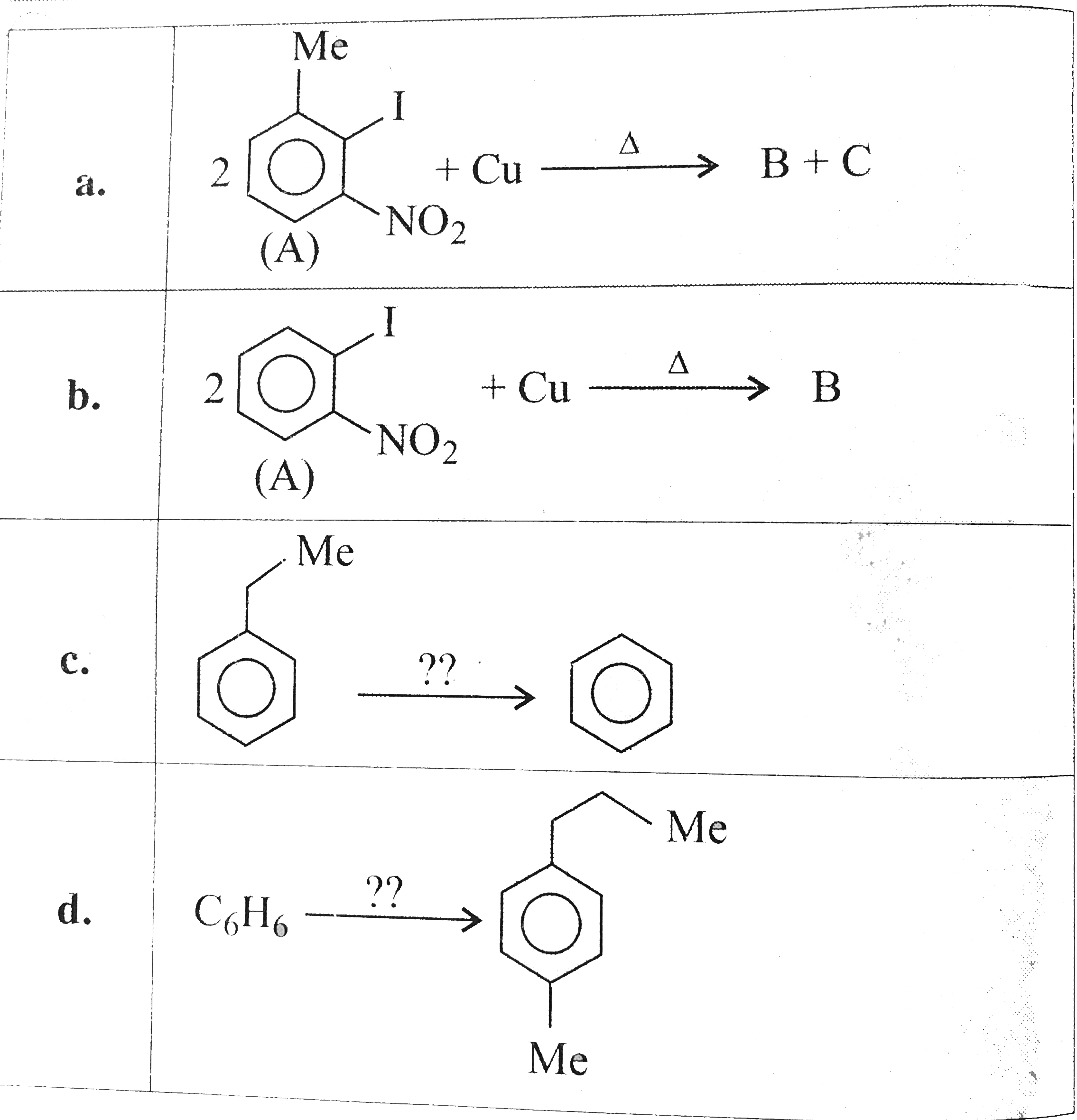

View Solutiona. The treatment of
b.
c. Wurtz reaction in case of tert-alkyl halide fails. Explain.
d. Dipole moment of
e. Why should Grignard reagent be prepared under anthydrous conditions?
f. Why does
View SolutionGive the decreasing order of following with their properties as indicated.
A. Decreasing basic, mucliophllic and fugacity orders:
a.
c. I.
III.
B. The decreasing order of
a. I.
II.
III.
IV.
I.
II.
III.
IV. I
C. I.
II.
III.
IV.
C. The decreasing order of
a. I.
III.
b. I. PhCH_(3)
View SolutionDistingulish between the following compounds:
a. I.
b. I.
c. I. Styrene and II. Phenylacterlyelen,
d. I. Touene II. Stryene III. Methyl cyclohexane, IV. `PhCMe_(3) V.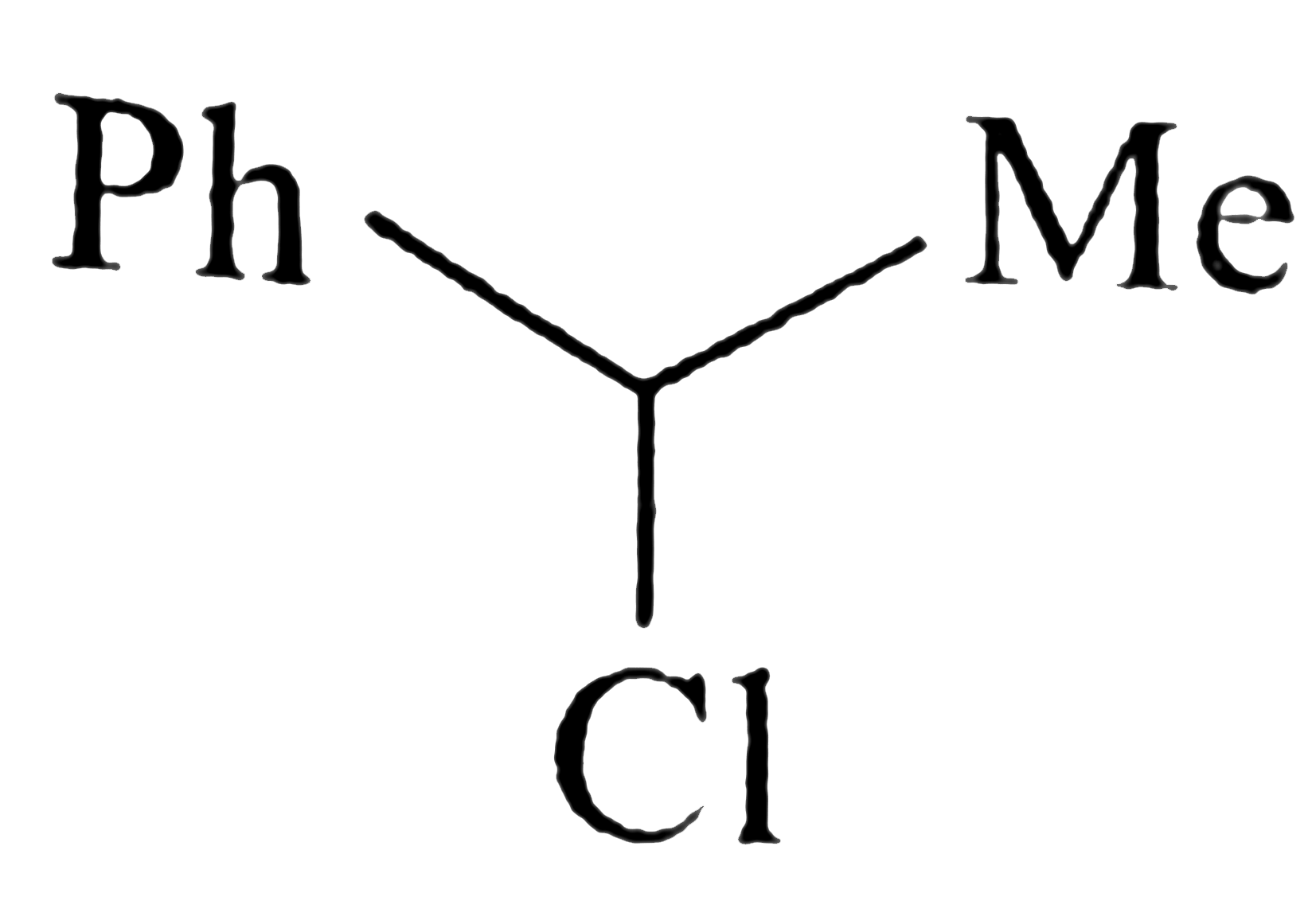
View SolutionComplete the following reactions:
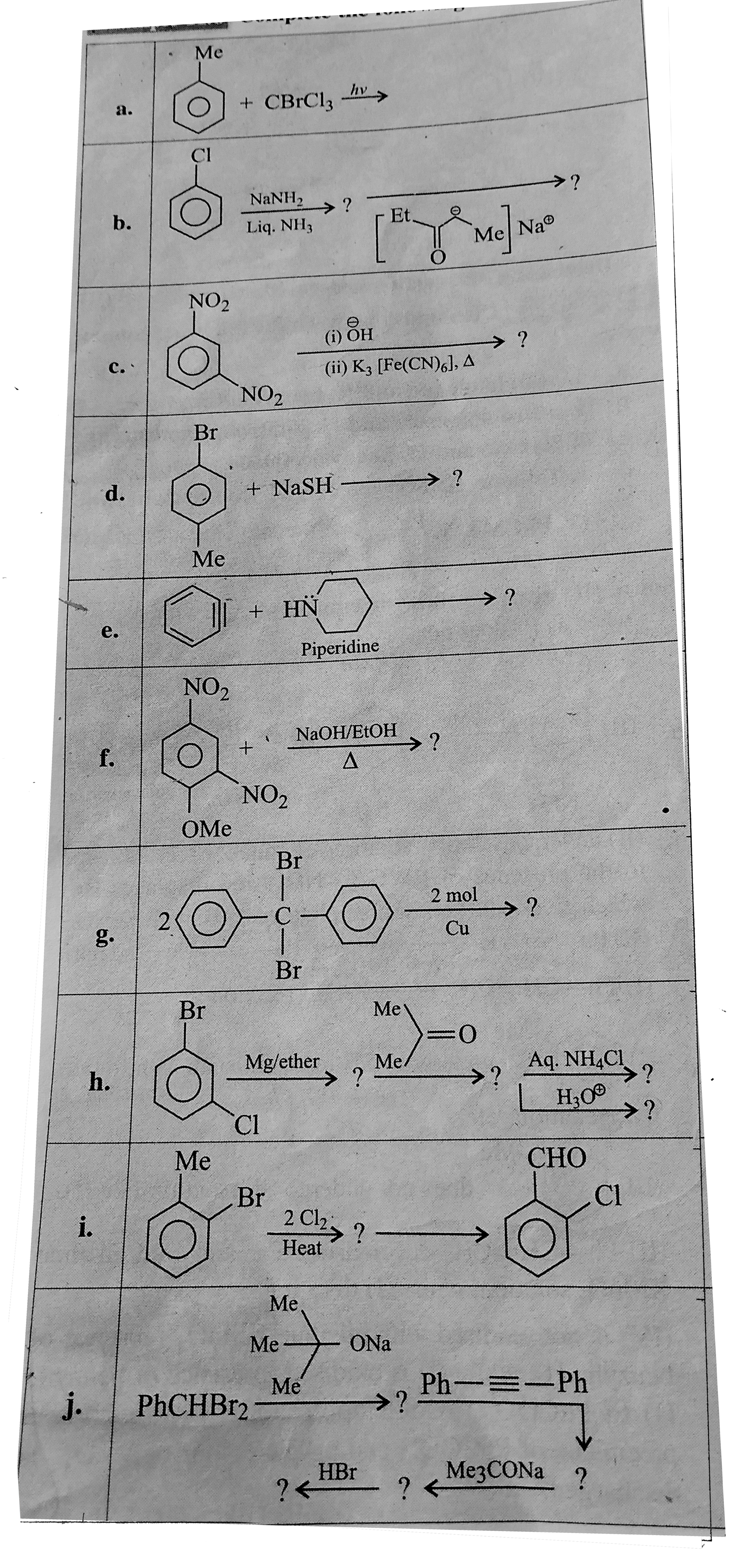

View SolutionIndicate the position where

View Solution
Compound
View Solution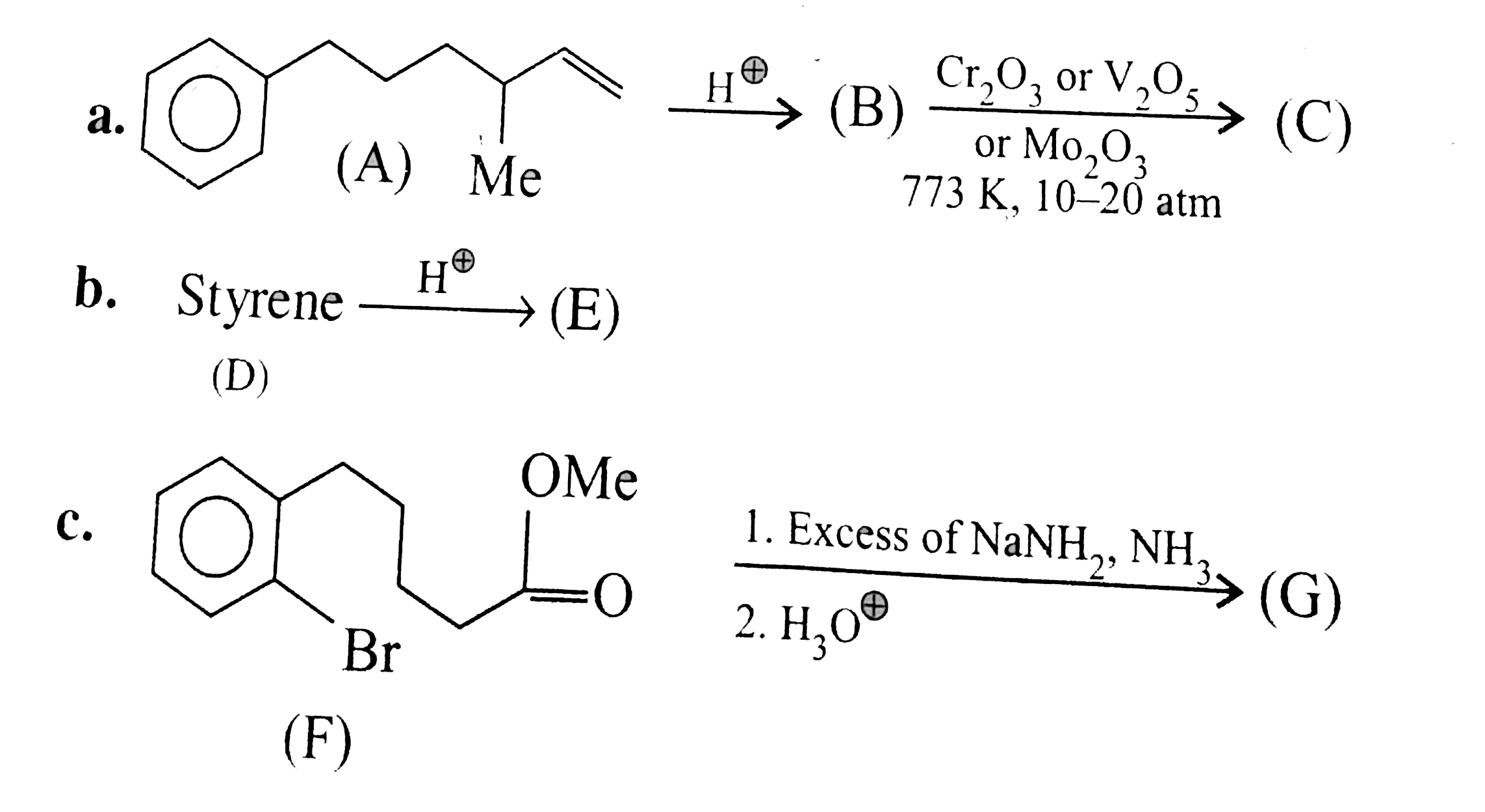

View Solutiona. Account for the rapid rate of ehanoulysis id
 , although it is
, although it is
Explain the following reactions:

View SolutionI. Give the product of debromnination of with
a. Erythro or mes
II. Expalin why

III. Give the major product of the following reaction:

View SolutionSyntesise the following:
a. Cyclohexanol
b.
i. Which diastermoer of
ii. If
c.
What is product
View SolutionGive the majore product, when the following compounds are treated with sodium methoxide.


Equaction
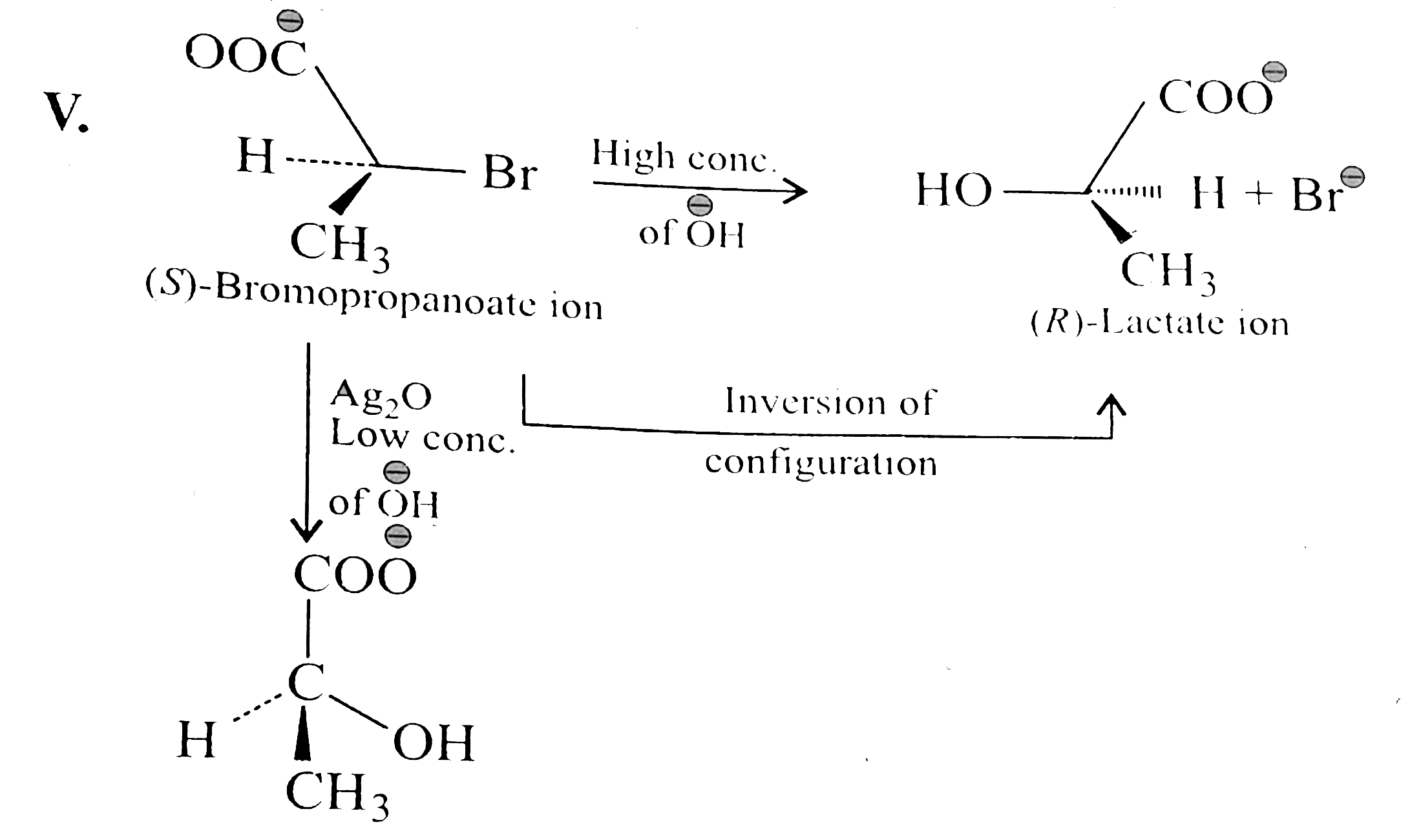
View SolutionI. Which of the following solvents is the reaction faster?

II. Indicate


View SolutionI. Give the products of the following:

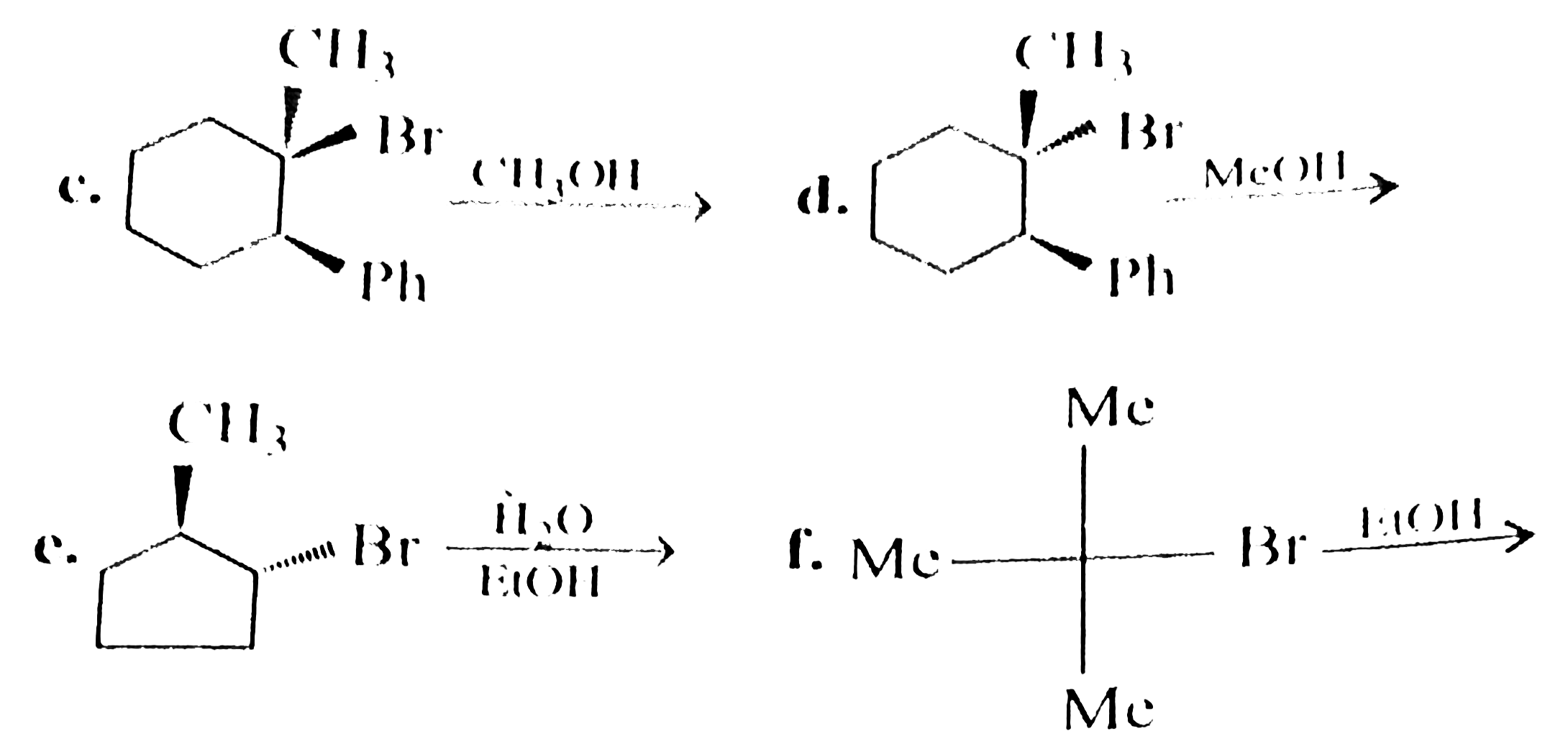
II. Which has faster rate of
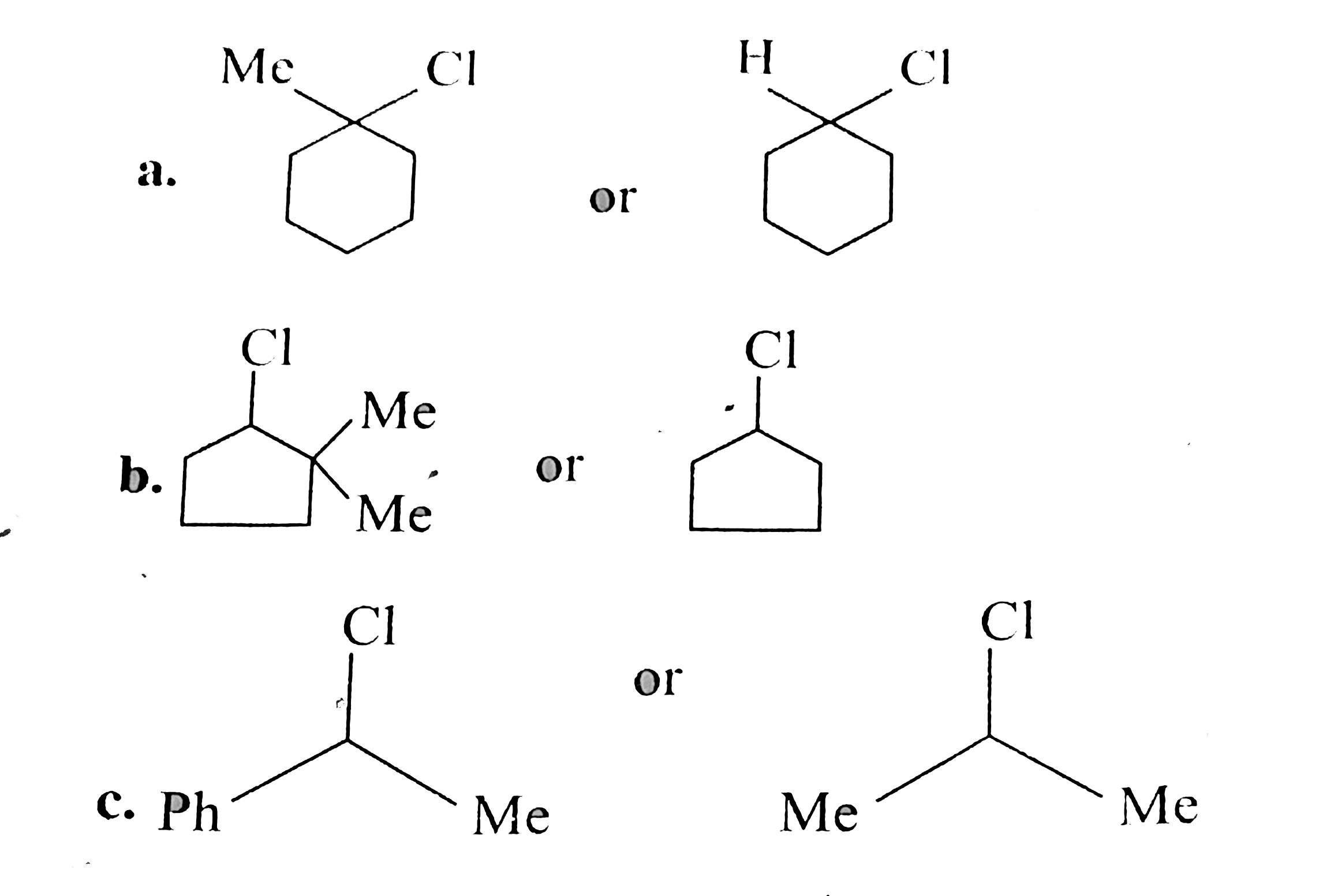
III. Which has faster rate of

IV. Give the decreasing order of:


Show the mechanism for the fromation of there products and sub-products.

Explain teh formtaion and mechanism.
VII. Explain wheter these reactions would follow the

VIII. What are the products of the following reactions?


IXgt a. This reacation gives three subtituion products. Show teh structure.

b. Which has faster rate?

X. GIve teh products of the following:

XI. Which is more reactive towards acid-catalysed hydration and explain the regiochemistry of the alchohol formed.
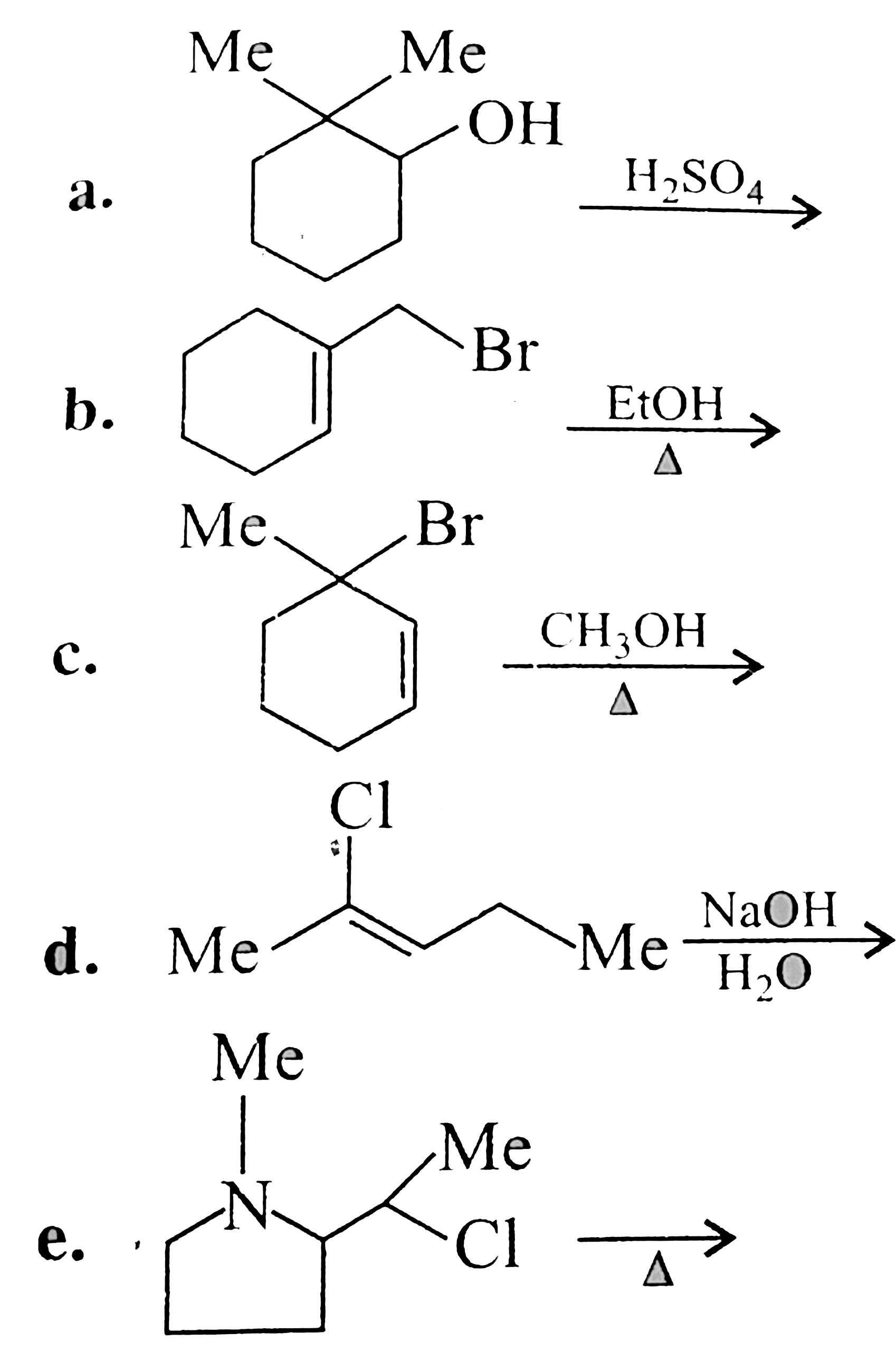
XII. Which hydrolyses at faster rate?



View SolutionA Grignard regane t
View SolutionCataylitc dehydrogention of methylcyclohexxane, obtained form petroleum, gives a liquid which on treatement with chlorosulphonic acid at
View SolutionAn organic compound (A) having C = 16.27%,H = 0.677%, Cl = 72.203% reduces Fehling solution and on oxidation gives an acid (B) having C = 14.679%, H = 0.612% and Cl = 65.137%. (B) on distillation with sodalime gives a sweet smelling liquid (C) which contains 89.12% chlorine. (C) can also be obtained by heating (A) with alkali. (A) can also be obtained by the action of Cl2 on
View SolutionBenzene reacts with
View SolutionTwo isomeric mononitro derivaters
View SolutionAn organic compound
View Solution
Solved Examples questions and complete solutions for chapter AROMATIC COMPOUNDS AND ALKYL AND ARYL HALIDES of CENGAGE CHEMISTRY (ENGLISH) of Class 12
All Exercises from CENGAGE CHEMISTRY Class 12 CHEMISTRY AROMATIC COMPOUNDS AND ALKYL AND ARYL HALIDES
- Archives Assertion-Resoning
- Archives Fill In Theblanks
- Archives Mutiple Correct
- Archives Mutiple Correct Answers Type
- Archives Single Correct
- Archives Single Correct Answer Type
- Archives Subjective
- Archives Subjective Type
- Exercises Assertion-Resoning
- Exercises Assertion-Resoning Type
- Exercises Concept Application
- Exercises Concept Application Type
- Exercises Linked Compreshension
- Exercises Linked Compreshension Type
- Exercises Multiple Correct
- Exercises Multiple Correct Answers Type
- Exercises Single Correct
- Exercises Single Correct Answer Type
- Exercises Subjective
- Exercises Subjective Type
- Illustration
- Solved Examples
- Solved Problems